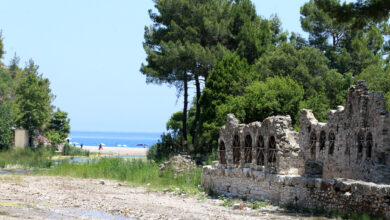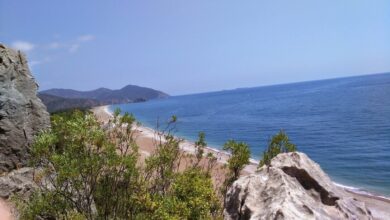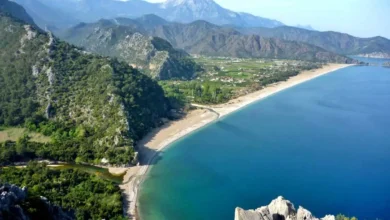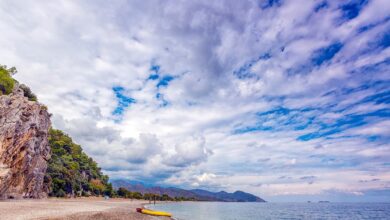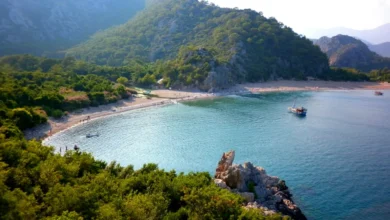Hello everyone, and welcome to our article “History of Olympos Ancient City – Olympos History.” We have prepared and shared about 14–15 posts on Olympos so far.
Yet most people think Olympos is only sun and sea. A deeper look, however, reveals a vast history beneath the surface.
For everything about Olympos see our Olympos Travel Guide, or for detailed information on the beach and sea check What Is the Olympos Sea Like?.
SOURCES: While writing this Olympos history article we consulted kulturportali.gov.tr and naturalpansiyon.com.
Olympos (OLYMPOS) in Antiquity
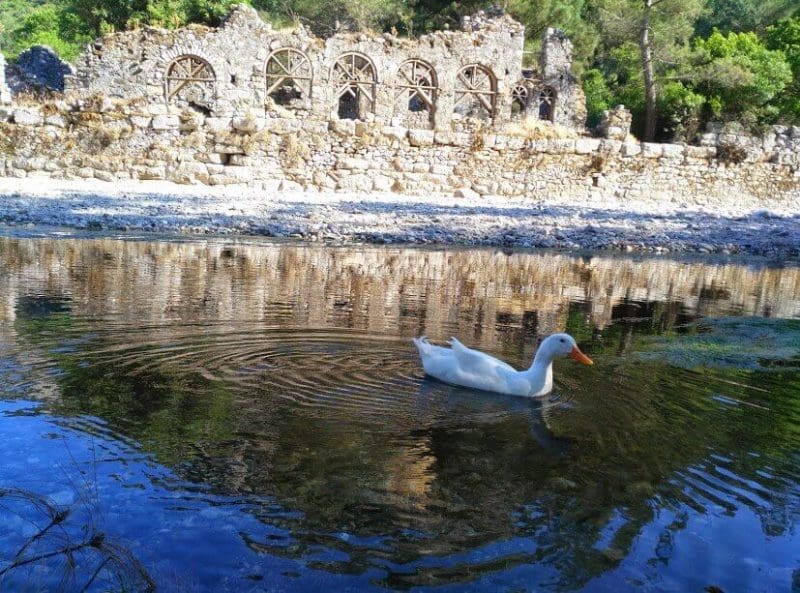
In antiquity “Olympos” was not limited to a single location; the name was shared by 19 different mountains. It appears as “Olympos” in Greek and “Olympus” in Latin sources.
Today’s Olympos lies on Türkiye’s Mediterranean coast within Antalya Province and is famed for its natural beauty and ancient ruins—temples, theatres, and other structures.
The region is steeped in mythology as well, once regarded as the dwelling place of the gods.
The coastline and its surroundings are also nesting grounds for sea turtles, so conservation work is ongoing.
Yanartaş—an area of eternal natural flames caused by underground gas vents—also lies here. Known as “Chimera” in antiquity, it inspired many myths.
With all these riches, Olympos is a perfect destination for both history buffs and nature lovers.
- Mount Olympos in Greek Mythology is the 2 919‑metre peak in Thessaly, Greece—the highest summit in the country and legendary home of the gods.
- Paphlagonia Olympos (also called Arıt Mountain) was known to ancient writers and 19th‑century travellers; it corresponds to Arıt Mountain east of Bartın city.
- Olympos Village in Antalya: the valley full of ancient ruins that we all visit for holidays and fun – the very place we love to vacation.
- Mount Olympos (Cyprus) is the island’s highest point at 1 952 m.
Inspired by the name, two mountains in the USA and one on Mars have also been called Olympus.
Some scholars suggest “Olympos” is not Greek. Its exact origin and meaning are uncertain, but it likely comes from an ancient Anatolian language and generally means “high mountain.” The idea of a god‑inhabited summit reached Greek mythology from earlier Near‑Eastern cultures.
In short, you may use Olympos, Olympos, or Olympos.
History of Olympos Ancient City

Olympos, the second‑largest port after Phaselis on Antalya’s south coast, takes its name from nearby 2 375‑metre Mount Tahtalı. The city lies within Beydağları–Olympos National Park, so you will see no stone construction along the beach.
Although the exact founding date is unknown, coins of the Lycian League minted in 167–168 BC mention Olympos. It was one of six cities with three votes, representing eastern Lycia.
Most ruins are hidden beneath dense forest, so every step covers history. Remains are mainly Hellenistic, Roman, and Byzantine. The city stood on both banks of a swift river that reached the sea; the banks served as quays, linked by a bridge.
A portion of that bridge still survives. On the south side of the shore are Hellenistic walls later repaired in Roman–Byzantine times. Near the river mouth a hill holds late‑period remains, and on the south bank stand the ruins of a theatre built on a Hellenistic foundation and repaired in Roman times; only the entrance is well preserved.
Speaking of the river: on 13 April 2014 a huge flood turned it into a monster. Watch the footage on YOUTUBE.
About 150 m west of the river mouth stands an impressive temple gateway linked to a small shrine. Architectural clues and an inscription on the statue base show it was built in honour of Emperor Marcus Aurelius (AD 172–173).
Quick note: you can preview sites in our Places to Visit in Olympos guide.
One of the most striking finds is the Sarcophagus of Captain Eudomus, unearthed by Antalya Museum excavations. Discovered in a rock niche at the river mouth, the tomb is famed for its poetic inscription and relief of the captain’s ship.
Olympos has been continuously inhabited for centuries—too much to recount here. For further details, stop by the tourism office at the entrance.
We have reached the end of our article on the History of Olympos Ancient City – Olympos History. We hope it was useful. Olympos deserves thorough explanation; please excuse the length—you can’t do justice to such a place in a few words. That’s all for now: take care, rest well, and keep travelling. Most importantly, please don’t forget to like and comment. Goodbye!
What Is Olympos Famous For?
1‑ Hibeş
2‑Domates Civesi
3‑ Trout
4‑ Seafood
5‑ Gözleme
Which Province Does Olympos Belong To?
Olympos lies within Kumluca District of Antalya Province.
What Is Olympos Like in Winter?
It is generally quiet in winter; only a few guesthouses stay open. People who love silence choose winter, while those wanting warmer weather prefer May.
Is Olympos Beach Sandy?
Unfortunately the beach is made up of pebbles of various sizes. Water shoes are strongly recommended.
Where Should I Stay in Olympos?
We recommend two places: Deep Green Bungalow and Otantik Pansiyon (our current favourite). Other options:
1‑ Blue & White Hotel
2‑ Olympos Deep Green Bungalows
3‑ Hotel 212 Olympos
4‑ Bayram’s Tree Houses
5‑ Retreat Centre Olympos Mitos
6‑ Olympos Çamlık Pansiyon
7‑ Kadir’s Tree Houses
8‑ Koala Bungalows
Is Olympos Beach Paid?
Yes. Without a Museum Card the entrance to the Ancient City (and thus the beach) is 50 TRY in 2023; weekly multi‑entry passes are available at a discount.
How Far Is Olympos from Antalya?
The distance is 85 km and takes about 1 hour 15 minutes by car. Roughly 90 % of the road is dual carriageway with a speed limit of 100 km/h.
Bus Companies to Olympos
1‑ Kamil Koç
2‑ Metro Turizm
3‑ Ulusoy
Is Olympos Safe?
Apart from isolated incidents, Olympos is generally safe.
OTHER QUESTIONS?
If these answers aren’t enough, please read our OLYMPOS TRAVEL GUIDE. Have a great holiday—good‑bye for now!
Places to Visit in Olympos
1. Çıralı
2. Adrasan
3. Olympos Ancient City
4. Yanartaş
5. Mount Tahtalı (Cable Car)
6. Ulupınar
7. Lycian Way
8. Göynük Canyon
9. Phaselis Ancient City
Olympos Coves
10. Genoese Bay
11. Pirate Bay
12. Akseki Bay
13. Sazak Bay




